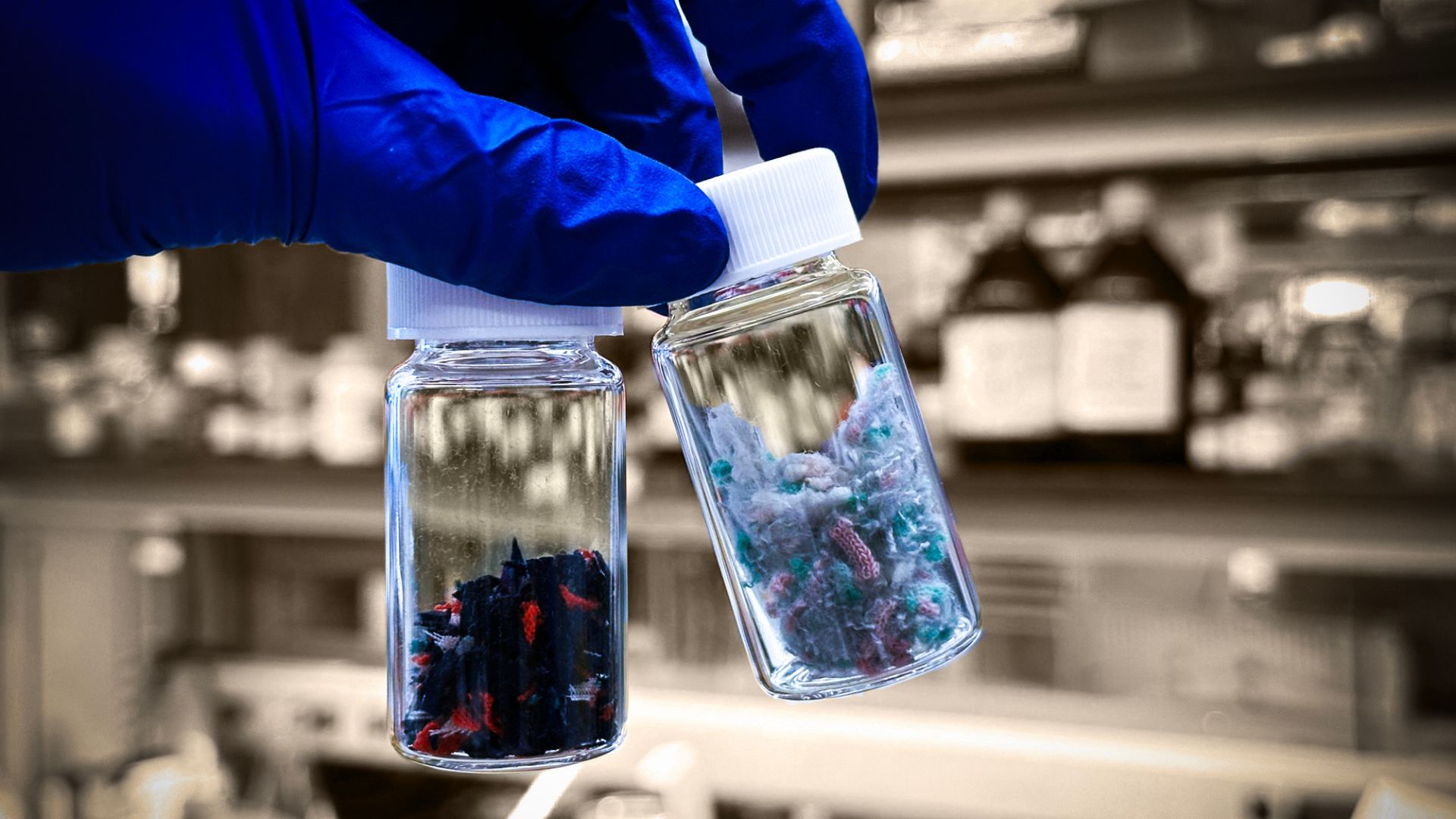In an ambition to address the existing recycling challenges of mixed fiber textiles, scientists are addressing the fast fashion industry’s waste via a new chemical method.
Recently, researchers from the University of Delaware, Newark, are working towards the development of a new chemical recycling approach for mixed fiber textiles potentially aiding the fight against the industry emissions output.
‘Microwave-assisted glycolysis process’ to tackle fast fashion
Dionisios Vlachos from the University of Delaware, also an author of the study focused on the new chemical recycling method told Interesting Engineering that the microwave-assisted glycolysis process offers several advantages over traditional recycling methods.
“This includes shorter reaction times, efficient degradation of polyester and spandex, and the preservation of cotton and nylon fibers,” he says.
“It also addresses the compositional complexity of mixed textile waste better than existing methods, which often require costly sorting and separation.”
This novel chemical method employs microwave-assisted, heat-based glycolysis with a zinc oxide catalyst to separate polyester, nylon, cotton, and spandex in mixed fiber textiles.
Vlachos explaining the glycolysis process to IE, stated that it involves breaking down polyester (PET) fibers in mixed textile waste into their monomers using ethylene glycol (EG) and a catalyst such as zinc oxide (ZnO).
“The primary reaction is the depolymerization of PET to form bis(2-hydroxyethyl) terephthalate (BHET),” he added.
“The reaction is facilitated by microwave-assisted heating, which ensures rapid and efficient breakdown of the polyester and spandex components while preserving cotton and nylon fibers intact.”
In contrast to other catalysts, zinc oxide seemed to provide a relatively benign environmental profile. Microwave-assisted processes have shown a reduction in the global warming potential compared to traditional petroleum-driven pathways, suggesting a more sustainable approach overall, the author noted.
Making large-scale, multi-fiber recycling feasible
A statement by the scientists emphasized that fast fashion produces approximately 92 million tons of textile waste globally each year, with less than one percent being recycled. Some of the mixed fibers are harder to recycle than others.
The new chemical approach seeks to make large-scale, multi-fiber recycling feasible and economically viable, ultimately reducing textile waste and promoting sustainability.
It takes just 15 minutes to deploy. In the process, the polyester is broken down into BHET (a useful ingredient for yarns, resins, and filaments), and spandex is converted into monomers like MDA (used in polyurethane foam and fiberglass plastics).
The chemical was then tested using an acidic solvent on a polyester-cotton textile as well as a spandex-nylon blended textile. The result showed that both the cotton and nylon retained their integrity.
Additionally, mathematical modeling indicated that the method could be economically and industrially feasible in the future, with the potential to achieve a global textile circularity rate of 88 percent with further refinement.
Vlachos told IE that achieving the projected 88 percent textile circularity rate will require further process refinement, including optimizing reaction conditions, improving by-product management, and enhancing the recovery of high-purity monomers.
Alluding to the process’s economic feasibility, he said that it has been evaluated using a techno-economic analysis (TEA).
“The analysis considered a textile feed throughput of 500 kg/h and revealed that the profitability index (PI) ranges from 0.95 to 1.29, depending on product sales scenarios,” the author told IE.
“The costs include capital, operating, and raw material expenses, with scalability improving economic feasibility through economies of scale. Thus, the process shows potential for scalability and cost-effectiveness in industrial applications.”
The study was published earlier today in the journal – Science Advances.
ABOUT THE EDITOR
Shubhangi Dua As a quirky and imaginative multi-media journalist with a Masters in Magazine Journalism, I’m always cooking up fresh ideas and finding innovative ways to tell stories. I’ve dabbled in various realms of media, from wielding a pen as a writer to capturing moments as a photographer, and even strategizing on social media. With my creative spirit and eye for detail, I’ve worked across the dynamic landscape of multimedia journalism and written about sports, lifestyle, art, culture, health and wellbeing at Further Magazine, Alt.Cardiff and The Hindu. I’m on a mission to create a media landscape that’s as diverse as a spotify playlist. From India to Wales and now England, my journey has been filled with adventures that inspire my paintings, cooking, and writing.

